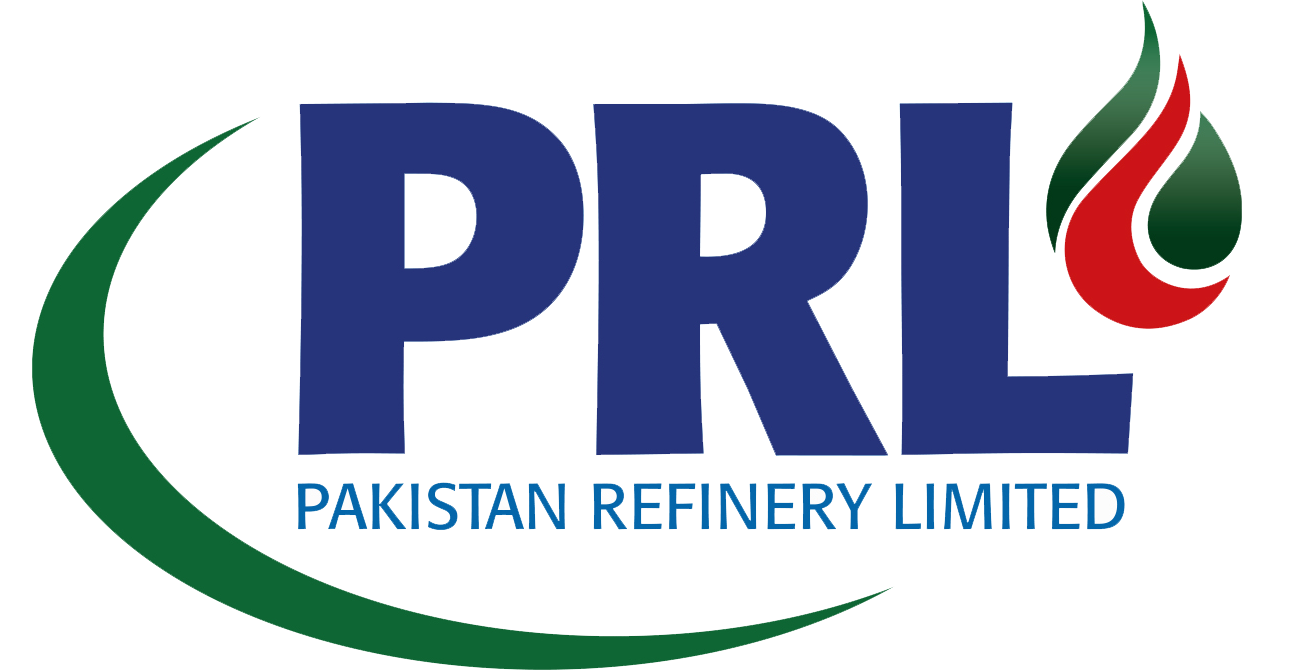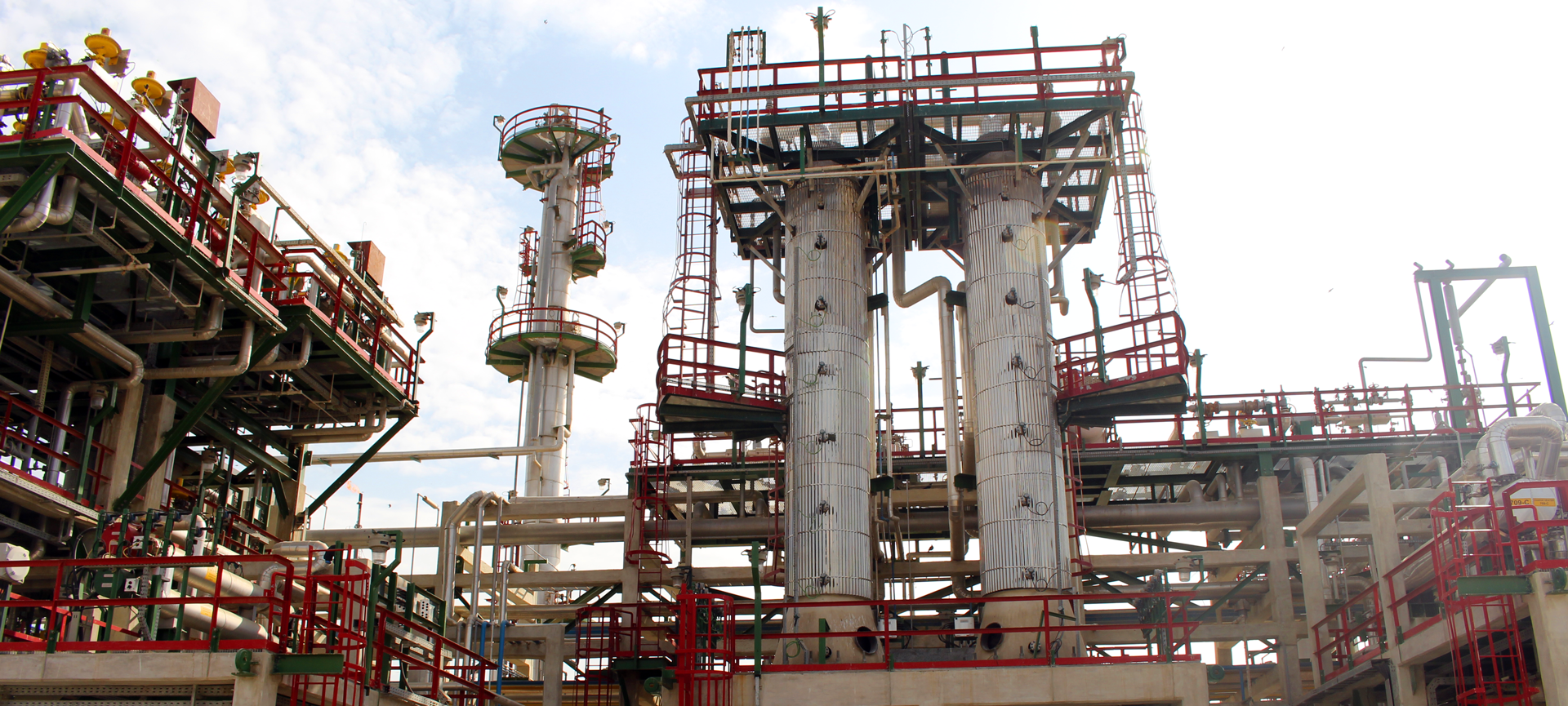Facilities Details
-
Crude Unit
The crude unit intake capacity is 47,110 Barrels per day. Initially refinery was designed on Agha Jari crude, after modifications and removing the bottlenecks, capacity increased to 55000 Barrels per day. With that refinery becomes capable to process wide range of crude blends. The crude feed stock after desalting & heating at required temperature is fed to crude distillation tower where a portion of the crude lighter cut point is taken as single stream overhead product. Gas oil is produced as a side stream and residue is drawn from the tower bottom.
-
Desalter
Crude oil often contains impurities such as free water, inorganic salts, suspended solids and water-soluble trace metals. As a first step in the refining process, to reduce corrosion, plugging, fouling of equipment and to prevent poisoning of catalyst in processing units, these contaminants are removed by desalting. In desalting process, brine particles are coalesced with added wash water droplet and consequently separated by gravity.
Hydro Unit
Purpose
Remove the sulfur and other impurities to meet finished product specs and prepare feed stock for the reforming and Isomerization units. The hydro unit intake capacity is 2450 metric ton per day. A wide range of product streams are obtained from the crude unit. In most cases, the properties of these streams either as final products or as feed stock for further processing are adversely affected by components like Sulphur and Nitrogen.
PRL employs one of the vigorous methods of removal of Sulphur compounds known as Catalytic Hydrodesulphurization. Initially its capacity was 2450 metric ton per day, after modification and removing the bottlenecks capacity increased to 3000 metric ton per day. It reduces the sulfur, nitrogen and other oil based containments to make the products on specification. In hydrotreating the hydrocarbon streams are desulfurized by contacting the oil with a stationary catalyst (CoMo based) at high pressure and moderate temperature in the presence of hydrogen rich gas stream. The sulfur present in the oil is eliminated as hydrogen sulfide gas.
Plat former Unit
Purpose
- Improve the octane rating of straight run heavy naphtha
- Provide hydrogen for refinery hydrotreating units
The plat former unit intake capacity is 500 metric ton per day. Straight run gasoline obtained from crude unit cannot meet specification of motor gasoline because of its low octane. Platforming process is used to upgrade low octane number straight run naphtha to higher octane motor fuel blending components by catalytically promoting specific groups of chemical reactions.
PRL fixed bed semi regeneration Platforming Unit is process designed by UOP and after revamp, unit capacity is increased from 280 MTD to 500 MTD. The naphtha feed is mixed with re circulating Hydrogen rich gas to three reformer reactors where selective action of Bimetallic Catalyst upgrades the low octane feed to high octane reformate used for making gasoline. Hydrogen gas produced in platforming reaction used in hydrotreating unit.
Catalysts are regenerated in situ with the equipment installed after the completion of cycle length.
Isomerization Unit
Purpose
- Improve the octane rating of light Naphtha
As petroleum industry moved toward marketing fuels with lower lead levels, it became increasingly difficult to use light strait run Naphtha in the Gasoline pool. Conversion of low octane normal paraffins to their corresponding branched Isomers to increase their octane number is recognized as a logical & necessary step in a lead reduction program.
PRL Isomerization unit intake capacity is 522 metric ton per day. Light Naphtha received from crude unit having low octane number passes through platinum base catalyst convert into higher octane hydrocarbon (Isomerate) in the presence of hydrogen atmosphere. This is accomplished by the catalytic isomerization of pentanes & hexanes hydrocarbons.
Effluent Water Treatment Unit
Unit capacity 35 M3 per Hr
Effluent Water Treatment plant is a combined physico-chemical and aerobic biologic waste water treatment plant designed for treating process effluents prior to discharge from Refinery premises. Some of the sources of the waste water are from desalting unit, spent caustic solution, LPG sweetening unit, Service water used for washing, RO plant, crude tanks water draining and boiler blow down. Waste water typically contains oil and grease, dissolved materials, suspended solids, phenols, ammonia, sulphides, COD, BOD and other undesirable compounds.
All effluent water first taken in API separator where oil and grease contents captured and transferred to storage tanks. Effluent water then passes through holding basin where maximum oil and grease contents are captured. From holding basin effluent goes into treatment plant.

